Table Of Contents
Not all customers stop doing business with you for the same reason.
It’s easy to think that customers churn because they can’t afford your product or that their business has folded.
But this involuntary churn is only 20% of the churn story - equivalent to 1% of the 5% average B2B churn we mentioned.
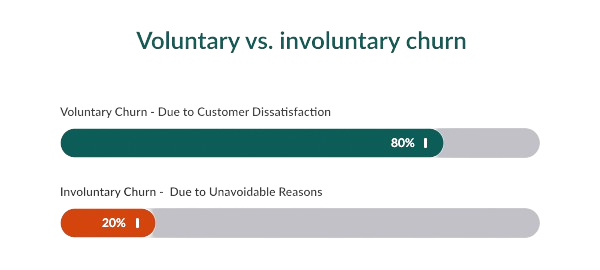
The other 80% of the story - which equates to 4% of the 5% average B2B churn - is completely avoidable and usually down to customer dissatisfaction with your product or service.
If you want your company to remain profitable and competitive in the market, it’s important you take steps to plug the leaks created by customers voluntarily churning.
Not only does reducing churn help to protect your existing revenue, but when you consider that you have a 60% chance with a current customer - it also represents huge potential for revenue growth.
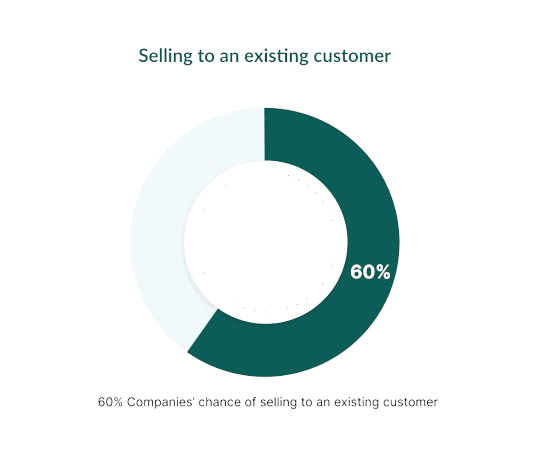
So, to help you get started, we’ll show you 4 ways you can use your CRM to reduce your churn rate.
First up, we’re going to look at how you can get more personal with your customers.
Create a personalized experience for your customers
One of the first things you should recognize is that your customers are unique, so you can’t build a one-size-fits-all approach to customer engagement.
You need to take the time to get to know them - both by building relationships and analyzing their data - to create more personalized experiences that could help you reduce churn by as much as 20%.
Personalization isn’t just a buzzword.
In fact, 80% of customers are more likely to do business with a company if it offers personalized experiences.
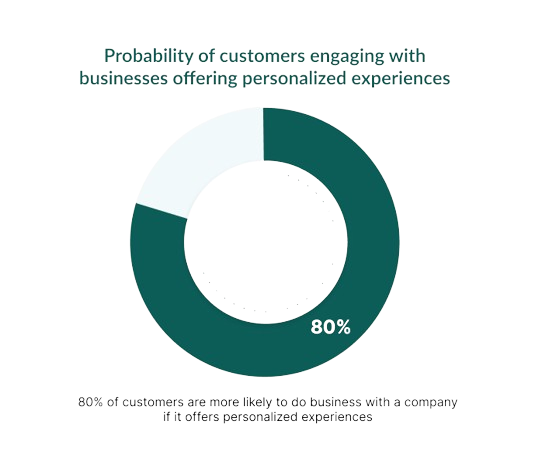
That’s not all.
Let’s take a look at the success rate of personalized vs. non-personalized email campaigns.
The average open rate - which measures when someone has looked at your email - for a personalized email is 29%, compared to just 15% for non-personalized emails. That’s a staggering 93% increase.
But that’s not all. Once your email has been opened, the click rate is what really matters. It’s a great way to measure how convincing your message was.
A non-personalized email has an average click rate of just 7%, whereas a personalized email has a click rate of 42% - a 500% increase!
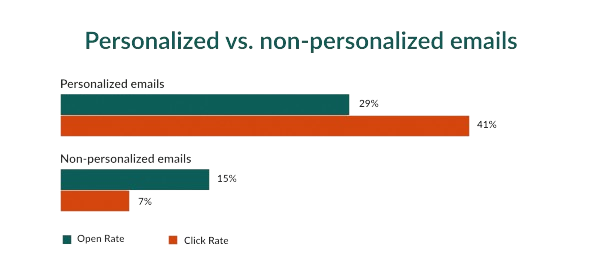
But why does it work so well?
Ultimately, it's because customers are at least 48% more likely to consider vendors that personalize their marketing to meet their specific business needs.
Personalization is an approach that breeds loyalty - with 79% of customers stating that the more personalized their experience with a brand, the more loyal they are to them.
However, personalization is about much more than just including a customer’s name in an email.
With your CRM, you can take advantage of several personalization tactics in order to create a truly personalized experience your customers will love, including:
Email campaigns - Throughout the customer lifecycle, there are countless opportunities to add value for your customers with email. Using your CRM, you can create two types of personalized email campaigns:
- Offers - by using the data stored in your CRM and then segmenting your customer list, you can make sure that you are always sending the right message to the right customers to create a personalized offer that resonates with them much more than a generic email would.
- Automations - by configuring automated workflows in your CRM, you’ll be able to send relevant email sequences to your customers based on their actions with your product, contract dates, milestones they’ve reached, or other specific data points that you specify.
These sequences could include anything from onboarding support, and contract renewal reminders, to requests for customer feedback. The only limit is your imagination.
Leveraging your CRM to automate personalized experiences like this is an increasingly important trend. Currently, 44% of businesses use their CRM platform for marketing automation.
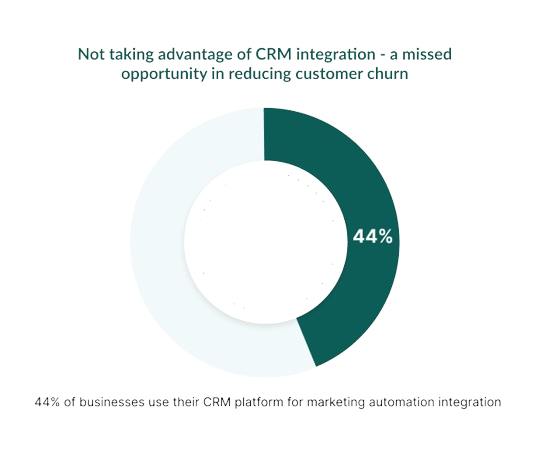
Preferences - by using your CRM to record your customers' preferences, you can then act on these to create a personalized experience for them. Examples of preferences they might have, include:
- Language options
- Contact method
- Contact frequency
- Contact purpose
- Timezone
- Self-serve vs. concierge support
Support - leveraging your CRM as a central hub for all your customer data presents you with huge opportunities for creating personalized experiences, not least during customer support.
By giving your support teams access to a 360° view of the customer as part of a fully integrated CRM and customer service platform - like SuperOffice - they’ll be able to quickly get up to speed with specific customer issues, requirements, or other historical data.
The benefit of this is creating a support experience that feels truly tailored to the needs of that specific customer - adding a layer of personalization that will boost customer satisfaction levels as a result.
Use predictive analytics to identify ‘at risk’ customers
By the time a customer has decided to churn - it’s usually too late to stop them.
The key to getting ahead of churn before it happens is to be proactive and look into the future to identify your ‘at risk’ customers.
These are customers who have the highest likelihood of churning based on a number of risk factors.
Typically an at-risk customer can be easily identified at a glance by assigning a ‘customer health score’ - which is a custom calculation based on things like product usage, support request frequency, CSM sentiment, and even payment delinquency.
In its simplest form, it can be displayed as a RAG (red, amber, green) status against each customer - or even as a score between 1-10.
According to our own research, only 7% of CRM users were actively tracking a customer health score.
If a self-imposed customer health score doesn’t sound like your preferred approach, then there are other ways.
Following the advances in AI and predictive data analytics, you can now use CRM systems to review your customer data and ‘look into the future’ to determine which customers are most likely to churn - and then step in to take preventative measures.
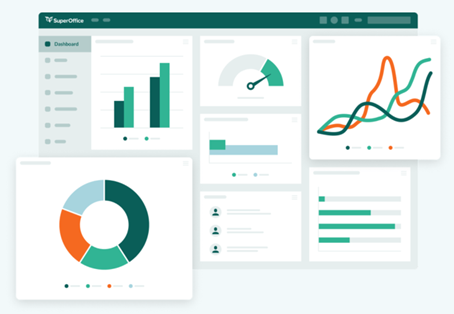
Develop an automated customer engagement strategy
The best-performing B2B companies are leveraging technology to help them combat customer churn.
Without technology, it would be almost impossible to effectively service an customer base at scale.
One such key piece of technology is a CRM platform. With 47% of CRM users agreeing that their CRM has had a ‘significant impact’ on the levels of customer retention and customer satisfaction in their business.
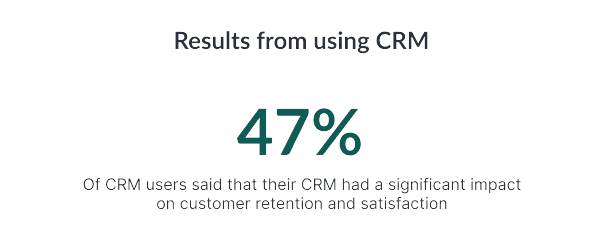
However, despite being the leading preferred platform of customer markets and retention specialists, only 24.6% of survey respondents listed CRM as their primary customer engagement technology.
Leading CRMs - like SuperOffice - now offer both AI and automation technology within their platforms, presenting retention specialists with an opportunity.
Developing an automated customer engagement strategy - to be executed via your CRM - offers 4 key advantages:
- Get ahead of the competition who aren’t using CRM or automation for engagement
- Service customers at scale by automation time-consuming processes
- Reduce costs by replacing human ‘busy work’ with automation technology
- Measure the impact of everything done within your CRM system
On top of this, the most effective channel for customer retention is email - with 56% of respondents naming it their top choice. With CRM being designed to offer a number of different email options, it’s the ideal choice to use as the ‘brains’ behind your automated customer engagement and retention strategy.

Not sure where to start with your automated customer engagement and retention strategy? Get a headstart by implementing options like the below as part of a 3-phase approach.
- Onboarding email sequence
- Auto-responders to support tickets
- Customer re-engagement emails
- Customer churn feedback emails
Once you have these basics in place, you can look to layer on additional, more sophisticated layers of customer engagement, like:
- Automated ‘check-in’ call scheduling
- Customer satisfaction surveys
- Milestone/anniversary acknowledgment emails
- Timely educational content
- Exclusive offers or discounts
From there, you can look to automate a number of processes and functions within your business that are related to customer engagement and churn prevention.
These could include:
- Tech-touch customer success
- Automated self-serve support
- Customer community
- Accounts receivable
- Relationship management
- Customer marketing
The only limit when it comes to automating your approach to customer engagement and retention is your imagination and what your CRM platform is capable of.
SuperOffice, for example, has automation, AI, email, self-service support, live chat, and more built-in - to offer customer engagement and retention specialists a full suite of tools to build out their automated engagement strategies.
Gather customer feedback for continuous improvement
Up to 95% of your customers that churn will do so without offering any kind of feedback or reasons as to why they’ve decided to churn.
But if you don’t know why people aren’t sticking with your product, how can you hope to improve it enough to reduce churn and improve customer retention?
In scenarios like this, customer feedback is the answer.
From a customer’s perspective, gathering feedback shows initiative and a willingness to improve - often exceeding their expectations.
In fact, 82% of customers are more likely to trust a company that asks for - and then acts on - their feedback.
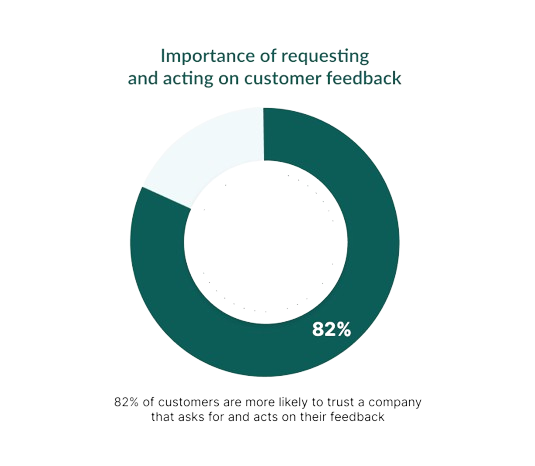
On top of this, a further 78% of customers admit to favoring brands that regularly ask for - and implement - customer feedback.
So how can you ask for customer feedback using your CRM, and how can it help to reduce churn?
If a customer has already decided that they’re leaving, it’s unlikely you’re going to change their mind at the last minute - and if even you do, these customers will eventually churn anyway.
Instead, you can use the loss of one customer as a learning opportunity to prevent the loss of others in the future - by gathering exit feedback.
But, be prepared:
Gathering this type of voice of customer data isn’t for the faint-hearted.
If a customer is churning, their feedback will often be cutting and direct, but it’s this type of honesty that will lead to the best results in terms of product and service improvements.
You can use features like SuperOffice’s in-built AI sentiment analysis to quickly understand the feedback you’re receiving - giving you time to put the feedback into action.
Not sure what to include in your email?
Use the email template below.
Exit Feedback Email Template
Subject: Where can we improve?
Dear [Customer Name],
We've noticed that you've decided not to renew your service with us, and while we're sad to see you go, we respect your decision and wish you all the best.
We're always looking to improve, and your input is invaluable to us.
If you have a moment, we would greatly appreciate it if you could share your reasons for leaving and any suggestions on how we could have made your experience better.
What could we have done to keep you with us?
Please hit 'reply' to this email and share your thoughts.
Your feedback is crucial in helping us serve you and our customers better in the future.
Thank you for your time and your help.
Warm regards,
[Your Name]
[Your Position]
[Your Company]
Conclusion
Customer churn is a perennial issue for B2B companies.
The average churn rate in the B2B space is 5% - with 80% of that (or 4% of total churn) being voluntary churn which is completely avoidable.
But what if you could take steps to eliminate that voluntary churn and bring your total churn rate down closer to 1% - it would be a game-changer, right?
Not only will you retain more revenue as a company - but you’re 3x more likely to sell to an existing customer , so your revenue will grow as a result.
Reduce your churn rate with SuperOffice
SuperOffice is an award-winning CRM and customer service platform that gives you all the tools you need to not only close more new business deals than ever before - but retain more of your existing customers too, including:
- Smart data integration options to give you a unified 360° view of your customers
- AI functionality designed to help you better understand your customers
- Granular segmentation filters to make messages more personalized than ever
- Store and analyze customer feedback gathered across multiple channels
- A centralized tool to manage all your manual customer engagement strategies
- Automated messaging and workflows to give your customers instant support
- Robust data analysis functionality to better understand your customer base
- Powerful marketing and sales features to help create personalized experiences
Using SuperOffice as a unified CRM and Service platform helps you to manage your entire customer journey centrally - making it easier than ever to exceed your revenue targets and dramatically improve your customer retention rates.


